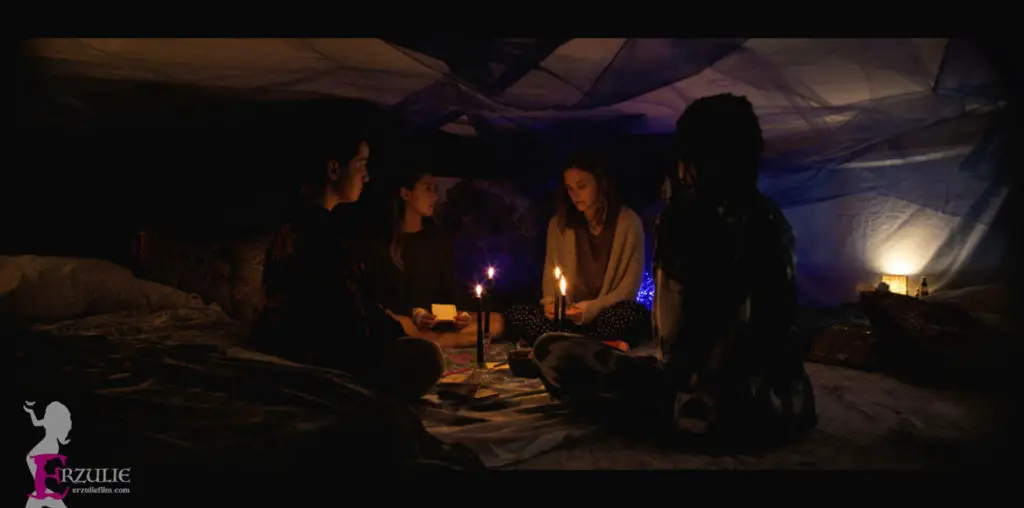Down the street from the Bridge Theater in San Francisco, there is a tiny English pub called The Pig and Whistle. Visiting author Catherine Mayo—a Texas native who now resides in Mexico City—noticed the place earlier in the day and, she says, ”I just can’t get over that name.” So it’s at The Pig and Whistle that we’ve landed for lunch, after catching an early matinee of the new movie Frida. Starring Salma Hayek and Alfred Molina, Frida is an ecstatically artsy biopic about the controversial Mexican painter Frida Kahlo and her scandal-plagued husband Diego Rivera.
Mayo liked it almost as much as she likes the words Pig and Whistle.
“The film was brilliant,” she proclaims, as Frank Sinatra’s “Strangers in the Night” blares incongruously from the speaker above our heads (“Scooby-dooby-doo”) and plates of steaming fish-and-chips appear on the table before us. “Frida was a fabulous, wonderful film,” she says, “one of the best I’ve seen in years.”
Mayo is the editor of Tameme, an annual bilingual journal of new writing from North America. She is the author of Sky Over El Nido (Winner of the 1995 Flannery O’Connor Award for short fiction) and a brand-new collection of travel essays: Miraculous Air: Journey of a Thousand Miles Through Baja California, the Other Mexico . For Mayo, today’s film was made all the more real by the fact that she’s a frequent visitor to the house where Frida Kahlo died in 1954. Known as La Caza Azul (The Blue House), Kahlo’s home—now a popular landmark and tourist attraction—is literally around the corner from Mayo’s own home, and, as a writer known for her fondness of those tiny, sharply-observed details that create an authentic and tangibly visceral sense of place, it is no surprise that she is attracted to the distinctive vibe of Frida Kahlo’s house.
“When you are in Frida’s house, you really do get the feeling, the sense of Frida’s life,” she says. “It looks just like in the movie—the shocking cobalt blue of the walls, all the big papier maché jiguses standing around. You feel a lot of life there, a lot of personality, and also a lot of sadness. And then you see her bed, with the mirror at the top of the bed so that she could paint her full-body self-portraits, even after she was too ill to stand. You really feel her presence all through the place.”
On a certain level, the movie Frida plays like an oddball travelogue of notable Mexico City spots with those aforementioned “distinctive vibes.” Such landmarks include the various homes of Kahlo and Rivera, especially the unique Twin Studios in San Angel, where the epically contentious couple lived from 1932 to 1939. “Those two little houses where they lived and worked—one painted red and one painted blue—really are connected by that little bridge,” says Mayo. “It’s an interesting metaphor for their lives, and it’s also just neat to see, very visually interesting, very modern.” Not so modern is the massive National Palace, where Rivera’s murals still survive. “The Palace was built on the ruins of an ancient Aztec site where they once performed human sacrifices,” she reports, “and parts of it still feel really creepy.
Seriously creepy. People do claim to hear voices there late at night.”
Then, there are the towering Pyramids of Teotihuacan, North of Mexico City, where Kahlo and Rivera—both of them devoted Marxists—once went day tripping with banished Russian philosopher Leon Trotsky (played in the film by Geoffrey Rush), who ended his turbulent life in Mexico City.
“It feels great to be up there on top of those pyramids,” says Mayo. “I completely believe that Trotsky would say that he felt fabulous being up there. Though when I went there the first time—and it’s a long, steep way to the top—there was this guy up there, trying to sell me this little Onyx carving he said he’d found under a bush. Yeah, right. My gut sense is that when Trotsky and Frida Kahlo went there, the same guy—or maybe the great grandfather of the guy—was up there waiting to sell them something.”
Also depicted in the film, is a place Mayo describes as simply “dripping with presence”: the room in which Trotsky was murdered, smashed in the head by an assassin with an ice pick. “The house where he lived was walking distance from Frida’s house,” Mayo says, “and the office where he was working, at his desk, when he was killed, you can walk in there and see it—and it does feel . . . icky.”
Icky? That’s the official travel-writer word for it?
“That’s the only word for it,” Mayo laughs. “It’s small and it’s dark—it’s icky. Even if you didn’t know someone was murdered in that room, you’d still get a bad feeling.”
Mayo’s advice, then, for those Frida-philes inspired enough by the movie to visit Mexico City in search of all these Kahlo-centric sites: if you do visit the Trotsky Death House, plan to follow it up with a brisk climb to the top of the Pyramids.
“Really,’ she laughs, “You’ll feel so much better.”
____________________________________________________________
Writer David Templeton takes interesting people to the movies in his ongoing quest for the ultimate post-film conversation. This is not a review; rather, it’s a freewheeling, tangential discussion of art, alternative ideas, and popular culture.

